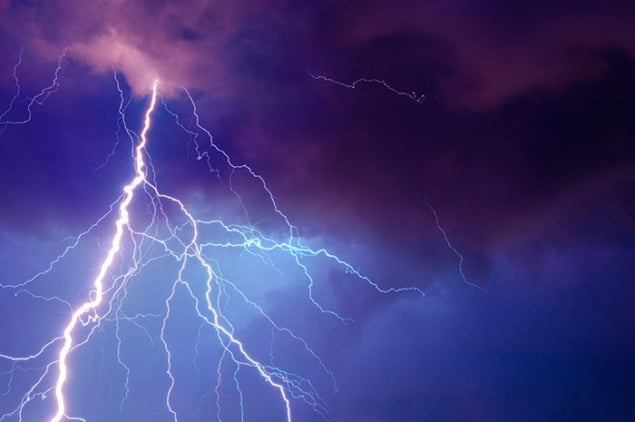| Isotope | Atomic mass (Da) | Isotopic abundance (amount fraction) |
|---|---|---|
| 14N | 14.003 074 004(2) | [0.995 78, 0.996 63] |
| 15N | 15.000 108 899(4) | [0.003 37, 0.004 22] |
- Nitrogen and carbon isotopes 15 N and 13 C are not radioactive but are heavier than their more abundant counterparts (14 N and 12 C) in the natural environment. These isotopes are fractionated (selected for or against) by physical and biological processes to some degree, causing slight but often consistent variations in natural abundance.
- Natural nitrogen (7N) consists of two stable isotopes: the vast majority (99.6%) of naturally occurring nitrogen is nitrogen-14, with the remainder being nitrogen-15. Fourteen radioisotopes are also known, with atomic masses ranging from 10 to 25, along with one nuclear isomer, 11mN.
- Of linking nitrogen sources to nitrate contamination. The conventional method for measuring and reporting the stable isotope composition uses a delta (δ) notation based on the following equation: where “R” is the measured isotope ratio of the less abundant isotope over the more abundant isotope for a sample and standard (air).
Measurable variations in the isotope abundances (and atomic weights) of nitrogen are found in most nitrogen compounds. The vast majority of chemical reagents, manufactured fertilizers, and environmental samples have δ 15 N values between about −15 and +20 ‰ which corresponds to x ( 15 N) = 0.003 61 to 0.003 74 and A r (N) = 14.006 67 to 14. Natural nitrogen (N) consists of two stable isotopes, nitrogen-14, which makes up the vast majority of naturally occurring nitrogen, and nitrogen-15.
The primary reference material for the relative abundance measurements of nitrogen isotopes is atmosphericN2, which is homogeneous with respect to analytical uncertainties and is assigned aδ15Nair Ummy video license key. value of 0 ‰. Relative isotope-ratio measurements of nitrogen commonly have uncertainties of the order of 0.1 ‰,which is significantly smaller than the reported uncertainty of the calibrated 'best measurement'(1.1 ‰). Variations in the isotopic composition of nitrogen in chemical reagents and natural terrestrialsystems are known to exceed 200 ‰, which is much larger than the uncertainty due to either relative or'absolute' isotope-ratio measurements. Therefore, the accuracy and precision of the standard atomicweight of nitrogen are limited almost entirely by real variations, hence the annotation 'r'.
Common Isotopes Of Nitrogen
Measurable variations in the isotope abundances (and atomic weights) of nitrogen are found in most nitrogencompounds. The vast majority of chemical reagents, manufactured fertilizers, and environmentalsamples have δ15N values between about −15 and +20 ‰ which corresponds to x(15N) = 0.003 61 to 0.003 74 andAr(N) = 14.006 67 to 14.006 80. Isotope fractionations are caused by physical, chemical, and biologicalprocesses. Some of the largest common effects in the natural environment are caused by microbially mediatedoxidation and reduction reactions and by ammonia or nitric acid evaporation.
The most 15N-enriched occurrences reported in nature include dissolved nitrate that had undergone partial microbialreduction (denitrification) in groundwater (e.g., δ15N = +103 ‰, x(15N) = 0.004 039, andAr(N) = 14.007 10), and nitrate in Antarctic ice that may have been fractionated by evaporation ofHNO3 with δ15N = 150 ‰, x(15N) = 0.004 210, and Ar Ps4 remote play download pc. Dooplay theme. (N) = 14.007 27.
The most 15N-depleted substances from natural terrestrial environments include nitrous oxide from groundwater undergoing microbial denitrification (δ15N = −55 ‰). Still lower values have been reported forNOx escaping from a nitric acid production facility (δ15N = −150 ‰, x(15N) = 0.003 115, andAr(N) = 14.006 18), and for a commercially available potassium nitrite reagent (δ15N = −80 ‰, x(15N) = 0.003 371, and Ar(N) = 14.006 43).
The annotation 'g' reflects the fact that anumber of samples are known to have atomic weights outside the uncertainties of the standard atomicweight of nitrogen. Many thousands of isotopic analyses of nitrogen have been made since the 1950s; nevertheless,more occurrences of extreme values may be expected as work expands in the fields of contaminant hydrology,biology, and atmospheric chemistry.
Atomic weights of the elements 2009 by M.E. Wieser and T.B. Coplen. Pure Appl. Chem. 2011 (83) 359-396

CIAAW
Isotopes Of Nitrogen Abundance

Nitrogen
Ar(N) = [14.006 43, 14.007 28] since 2009
The name derives from the Latin nitrum and Greek nitron for 'native soda' and genes for 'forming'.Nitrogen was discovered by the Scottish physician and chemist Daniel Rutherford in 1772.
Natural variations of nitrogen isotopic composition
Isotopes Of Nitrogen Application
Isotopic reference materials of nitrogen.
